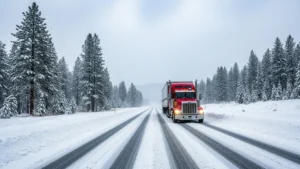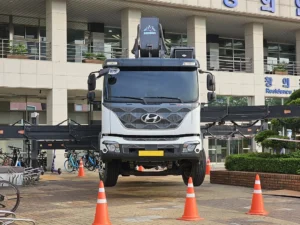With change in seasons and the growth in goods flows, spring also marks the beginning of a new season for road transport.
Spring has arrived. With rising temperatures and winter gradually fading away, the change in seasons and the growth in goods flows, spring also marks the beginning of a new season for road transport. As this season approaches, maintenance to optimize the performance and safety of commercial vehicles becomes a priority for fleets.
Spring is the perfect time for fleets to transition from the harsh winter months to warmer and more demanding conditions. Although this season doesn’t present the same challenges as winter, it can still affect performance and fuel efficiency. Therefore, adopting a proactive approach to fleet maintenance and management during spring can help prevent costly repairs and ensure operations remain at their peak.

Spring maintenance: how to optimize fleets
Certifications and repairs
Spring maintenance for the fleet is essential to repair the damage caused by winter. A thorough inspection should be carried out to check the condition of the brakes, tires, battery, and windshield wipers. Replacing worn-out components now can prevent future failures. Additionally, equipment recertification is crucial to maintain performance standards and compliance. Spring is the ideal time to assess and maintain equipment, ensuring it is ready for operational peaks.

Preventive maintenance
Preventive maintenance is essential to prolong the lifespan of equipment. To ensure optimal performance and avoid costly repairs, some key tips shared by Hi-Kalibre Equipment include:
- Check hydraulic systems: Verify fluid levels and inspect seals and fittings for wear and leaks, preventing future failures.
- Inspect actuators and valves: Look for signs of wear in these components and perform regular checks to avoid downtime.
- Lubricate moving parts: Apply lubricant regularly to bearings and seals to ensure smooth operation and reduce wear.
- Maintain filters: Replace or clean filters regularly to avoid blockages and system failures.

Fuel efficiency optimization
With rising temperatures, driving activity also increases, so improving fuel efficiency should become a priority. Taking steps to reduce downtime, plan efficient routes, and ensure proper tire pressure can make a significant difference. Additionally, performing regular engine checks and replacing air filters helps keep fuel consumption under control.
Implementing telematics data and GPS tracking can be key to monitoring fuel consumption, optimizing it, and reducing unnecessary mileage.

Safety protocol review
Smart Fleet reminds us that spring brings new challenges, such as road construction, unpredictable weather, and increased pedestrian and wildlife activity. Therefore, it is the ideal time to update driver training on how to navigate detours and maintain proper safety distances. Including safety updates as part of spring fleet maintenance can improve driver awareness and reduce the risk of accidents.

Planning for seasonal demand increase
Last but not least, it’s important to remember that during this season, many industries experience an increase in activity. To be prepared for higher demand, it’s crucial to ensure vehicle availability, adjust driver schedules, and maintain an adequate inventory of essential parts and supplies. A well-planned approach in advance will help prevent last-minute delays and ensure service reliability.

Truck drivers are at high risk of developing diabetes
About 11% of the adult population meets the criteria for prediabetes, and there is a particular group at high risk: truck drivers. Diabetes rates in

Starting in trucking: required permits, registrations, and compliance
Are you a new carrier? This is what you need to know about permits, registration, and compliance. The trucking industry can be quite challenging for

Alberta Clipper Brings an Early Polar Blast: A Critical Alert for Drivers
The Alberta Clipper is sweeping across the country with fast-moving Arctic air, sharp temperature drops, and dangerous road conditions that demand heightened attention from all professional drivers.

American manufacturers trigger truck “dumping” investigation
Foreign trailer manufacturers under investigation for alleged “dumping” in the U.S. The U.S. truck market is at the center of a trade dispute. After domestic

ATRI Warns: Litigation Is Rising Across the U.S. Trucking Industry
A new report from the American Transportation Research Institute (ATRI) reveals how escalating litigation, higher legal costs, and mounting insurance pressures are reshaping the U.S. trucking industry. The findings mark a critical moment for motor carriers, insurers, and logistics stakeholders who must understand the changing legal environment — and the increasingly strategic role of strong insurance partnerships.

FMCSA says no to hours-of-service exemptions
FMCSA rejects two requests for exemptions to hours-of-service rules for commercial drivers. The Federal Motor Carrier Safety Administration (FMCSA) has denied two exemption requests related
